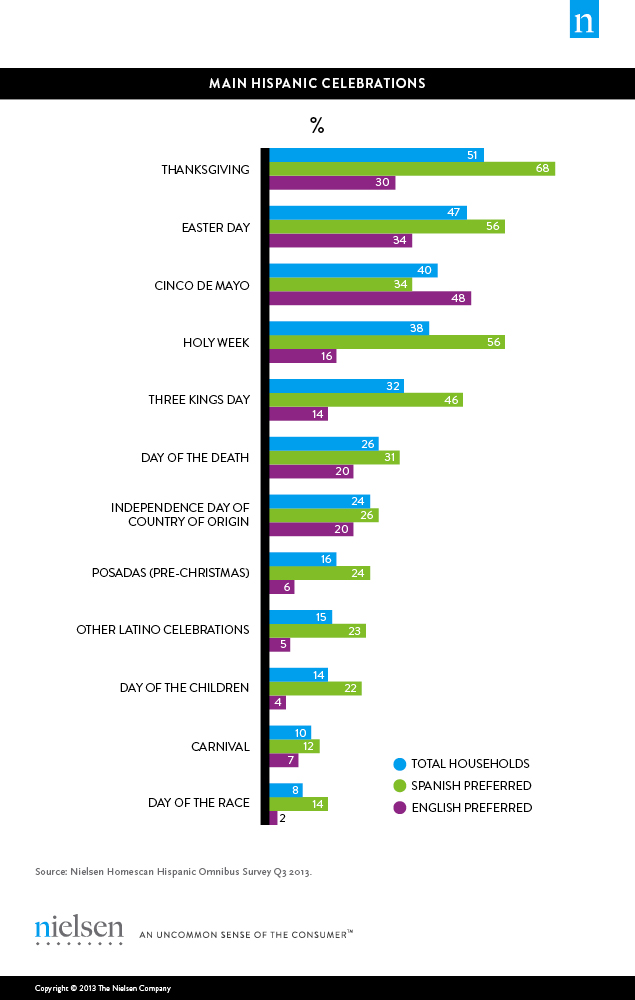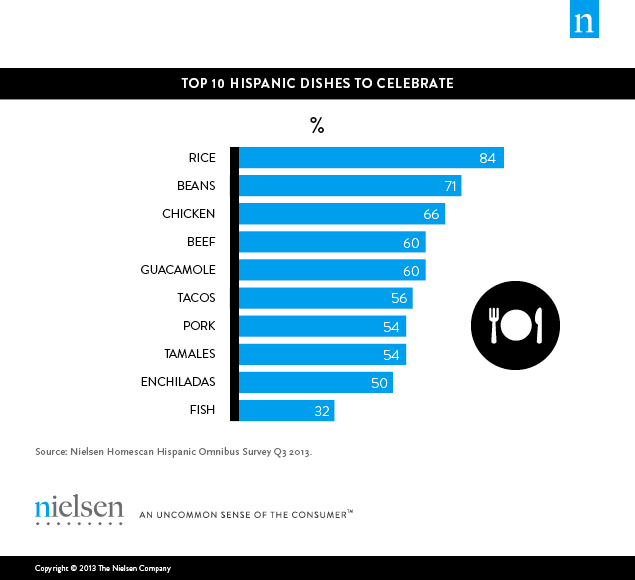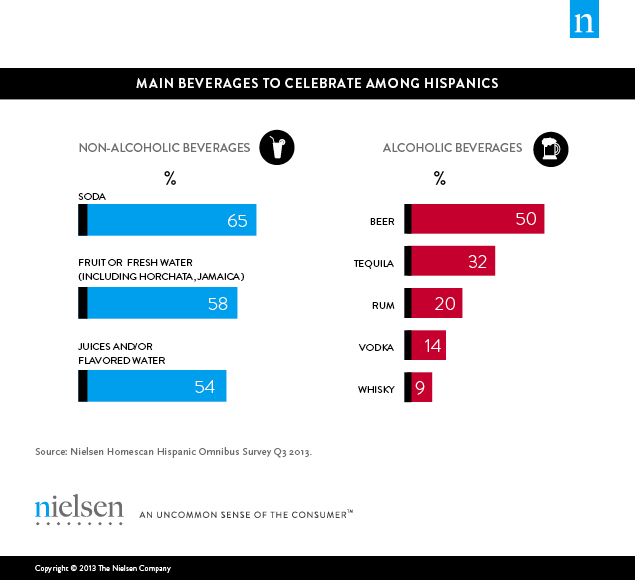Over 52 million strong, Latinos are affecting every aspect of the national landscape—pop culture, the workforce, consumption, politics, and America’s identity as a nation. And from Sept. 15 to Oct. 15, Hispanic Heritage Month recognizes and celebrates the Latino culture and heritage, as well as the contributions U.S. Hispanics have made to the nation.
This period was chosen because it coincides with the independence celebrations of several Latin American countries: Costa Rica, El Salvador, Honduras, Guatemala, Nicaragua, Mexico and Chile. It also coincides with the “Día de la Raza” (Day of the Race) celebrations that many Latin American countries celebrate in remembrance of Christopher Columbus’ arrival in the Americas.
During the month, Latinos celebrate Hispanic heritage through festivities that highlight the music and food that extol the countries’ history and rich culture. To learn more about how Latinos revel this month and during other celebrations, NielsenIQ conducted a survey among the Hispanic community in the U.S. to glean deeper insight. Here are some highlights:
Only 30 percent of respondents said they celebrate Hispanic Heritage Month, including the Independence Day of their country of origin.
The affinity to celebrate main Hispanic celebrations differs among English and Spanish preferred Hispanics. Spanish-preferred Latinos are more likely to celebrate Thanksgiving, Easter Day, Holy Week and 3 Kings Day, while English-preferred Hispanics are less likely to celebrate these holidays. Cinco de Mayo is the Hispanic celebration that attracts the biggest engagement, at 48 percent.

Even though respondents largely don’t celebrate this month, 73 percent consider it extremely important or very important that companies and organizations recognize and celebrate Hispanic Heritage Month and the contributions Hispanics have made to the U.S.
When it comes to celebrating Heritage Hispanic Month or Independence Day for their country of origin, Latinos mainly organize parties at home (44%), attend Latino music concerts (44%) and in smaller proportion, attend festivals and celebrations organized by governments (35%), academic organizations (25%) and employers (10%).
Celebrating beyond Hispanic Heritage Month
There are multiple opportunities to market to Hispanics in addition to Cinco de Mayo or Hispanic Heritage month. Latinos embrace various Hispanic holidays at different rates, and language preference plays a key role. Also, Latino families celebrate important life events, such as día del santo, cumpleaños, bautizos, quinceañeras, many of which involve spending time with family. These celebrations frequently incorporate Catholic religious services, grand meals, and the inclusion of food and music is always on the menu.
When it comes to food, the most popular dishes are rice (84%), beans (71%), chicken (66%), beef (60%) and guacamole (60%). These are followed by tacos, pork, tamales, enchiladas, and fish.

Latinos love fruit and natural ingredients, and aguas frescas, or fresh waters (a combination of fruits, cereals, flowers, or seeds blended with sugar and water to make light non-alcoholic beverages), are always a key ingredient of these celebrations: Tamarindo, chia, horchata, jamaica, agua de melón, sandía, lima, limonada, fresa, and piña are some of the most popular aguas frescas flavors.
When researching beverage preferences, NielsenIQ found that soft drinks are the big winners: Sixty-five percent of Hispanics drink soda, making it the most-consumed beverage, even above fruit or fresh water drinks, juices and/or flavored water. Fresh water drinks are a staple beverage type for Latinos, and some of the most common flavors are tamarind, horchata, jamaica, and lima.
Among alcoholic beverages, beer is the big winner at 59 percent, followed by tequila (32%) and rum (20%). Also, acculturated Latinos are more likely to consume beer and tequila (59% and 40%, respectively) than Spanish-preferred Latinos (47% and 29%, respectively).

Understand the culture
Recognizing and celebrating Latino contributions is important, but understanding the distinctive path of demographics, culture, and consumption can fuel business growth. To market effectively to Hispanics, think beyond Hispanic Heritage Month and Cinco de Mayo, understand this group’s cultural components (family values, etiquette, rituals and religion, holidays, eating habits, etc.), and pay special attention to language. It matters, and not just in terms of English and Spanish. Being sensitive to language also involves methods and approaches that create emotional and binding connection with Latinos.



